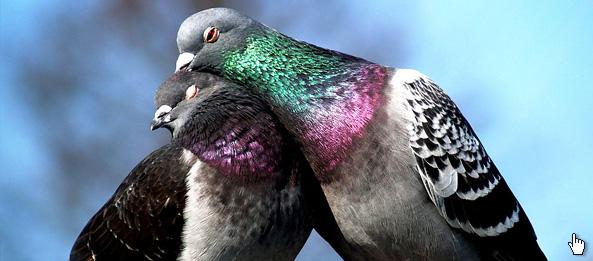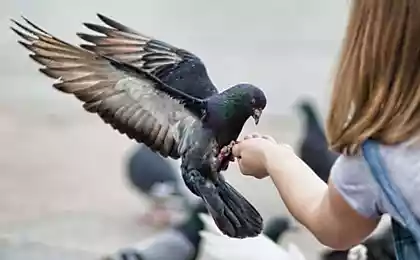1204
Pigeons

There are approximately 300 species of pigeons. These birds live in all parts of the world other than extremely cold regions, but most species live in tropical climates.
Pigeons plump body; small head; and short, sturdy legs. Their feathers are tighter and smoother than most other birds. The structure of the feathers of a dove can smooth the flow of air around the body of a bird in flight. In some species of pigeons feathers special form, which can help them to fly at speeds slower than usual. Other species have feathers that produce certain sounds during the flight. Interestingly, Doves communicate with each other through these sounds.
Most species of pigeons has a size of 15 to 38 centimeters in length.
Most pigeon feathers dull colors, they usually come in black, blue, brown, or gray. Males and females of most species are similar but males are slightly larger and more intelligent. Some species, such as the Asian fruit dove and pigeon sensitive, rank among the most beautiful birds in the world. These birds have bright signs on the front of the body. Dove can use its labeling, to attract mates or threaten other pigeons of the same species that are close to its nest or territory.
Interestingly, the pigeons drink in an unusual way. Pigeons thrust its beak into the water and suck the liquid through it as if it were a straw.
During World War I the pigeon named Cher Amy (Dear Friend) saved the lives of many French soldiers, carrying the message through the enemy lines.
Interesting fact, pigeons can reach speeds up to 70 km per hour and can fly up to 900 kilometers a day.
An adult pigeon has about 10,000 feathers.
Pigeons have been domesticated since ancient times and were used to deliver messages over long distances. In fact, well-known leaders of the past as Julius Caesar, Genghis Khan, etc. pigeons used to get important messages across long distances.























